Houseplant chestnut - care and maintenance
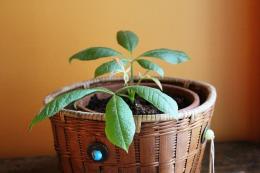
It would seem that, chestnut - tree and it is impossible to grow it at home. But nothing is impossible for professionals. And true flower growers are professionals and fans of their craft. Therefore, it is not surprising that they figured out how to grow rare indoor chestnut flowers at home.
Content:
- Homeland of the chestnut
- Keeping the plant at home
- Lighting
- Watering the plant
- Growing and transplanting
Homeland of the chestnut
The houseplant chestnut or otherwise chestnutspermum belongs to the legume family. It is native to Australia, where it most often grows on the east coast. Chestnut forests in those places occupy a large area and look very beautiful.
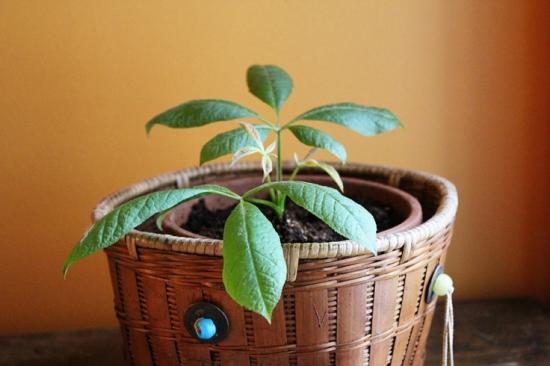
In indoor floriculture, the Australian chestnut has become widespread; its leaves are evergreen, its trunk is erect, and its crown is quite dense. In the wild, chestnuts grow up to 30 meters in height, while indoor chestnuts in adulthood have a height of 2.5-3 meters. Home grown chestnuts do not bloom. This is perhaps one of the unpleasant moments.
Keeping the plant at home
Keep the indoor chestnut plant at home at moderate temperatures during the summer months, it is advisable that ambient temperature did not exceed +24+26 degrees. In winter, chestnutspermum requires cooler conditions and sufficient lighting. The temperature in winter to maintain it should be from +12 to +18 degrees.
Lighting
Indoor chestnut prefers bright, diffused lighting; during the daytime it must be shaded from direct sunlight. It feels good on eastern and northwestern window sills and loggias. Sunlight in the morning and evening is quite enough for the plant. It is these sides in the apartment that will give the plant the necessary diffused lighting that it loves.
Direct sunlight is destructive for the plant: the delicate crown will quickly get burned, which will adversely affect its development. But lack of light is not the best option. The leaves will become faded and dull.
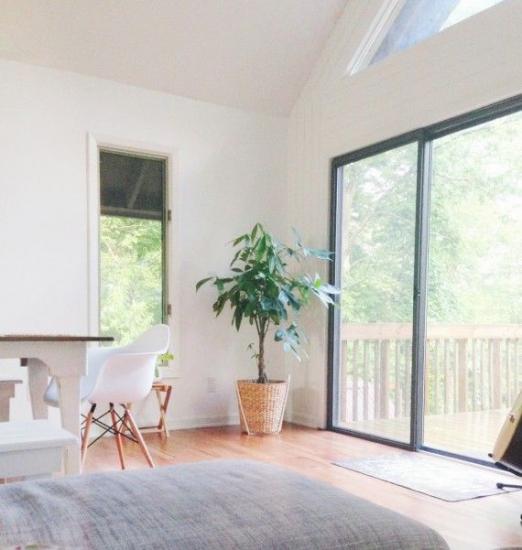
In the summer, the chestnut can be taken out into the open air, having first protected the place from direct sunlight.
Watering the plant
From spring to autumn chestnutspermum requires abundant watering without drying out the earthen coma. Water for irrigation must be settled so that it becomes soft. In winter, water less frequently, allowing the soil in the pot to dry out, but not overdry. In general, chestnut tolerates a lack of water more easily than its excess. By flooding a plant, you risk losing it, as the root system will gradually begin to rot and the chestnut will die. So act carefully, otherwise you yourself, due to inexperience, will ruin the plant.
In nature, this plant often grows along the banks of rivers, so it loves moist air very much. Regular spraying and warm showers have a very beneficial effect on the growth and development of indoor chestnut.
Spraying carried out with settled warm water. This is especially true in winter, since heating makes the air completely dry. Chestnut begins to suffer from dry air, and a warm shower every day will become a real holiday. Just remember that under no circumstances should you place the plant next to radiators.Droplets of water that remain on the leaves can cause inconvenience to the plant, as they will lead to burns. For the same reason, it must be hidden from the sun in summer. It grows well outdoors, but again requires shelter from direct sunlight.
Growing and transplanting
Indoor chestnuts are grown from seeds, which are kept in warm water for one day before planting. Then they are placed in the ground and maintained at a temperature of +18 degrees.
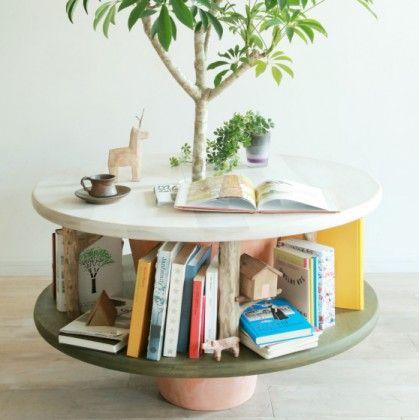
Seeds cannot be buried deeply, as without air access they will simply rot.
The process of chestnut sprouts appearing is long – two or three months. After the first leaves appear, you need to start feeding. Falling leaves serve as a signal to replant the plant. Until this happens, you cannot replant, as the plant will die.
Fertilize chestnut trees in spring and summer with fertilizer for ornamental flowering plants. Feeding is carried out once every 2-3 weeks.
The first-year plant is planted in light soil and only after the chestnut has grown stronger and matured is it transplanted into dense soil. You can buy a ready-made composition for decorative foliage plants, but it must be dark in color. Red peat causes chestnut rejection. The soil must be nutritious as the plant requires a lot of nutrients for healthy growth.
About, when is the best time to replant? indoor chestnut flowers, there is one opinion - only in spring. A young plant - once a year, an adult - once every three years. With each replanting, the container and volume of soil should be increased. Chestnut is a powerful plant, even at home, and its root system requires space and nutrition.
So, if you wish, it is not difficult to grow chestnuts at home.You need to be patient and love, then everything will work out in the best possible way.




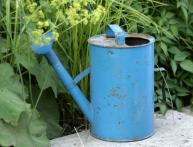


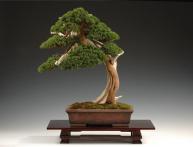
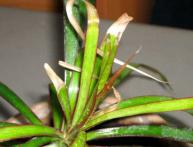

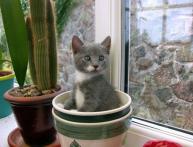
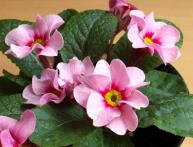
Comments
Whatever these flower growers can come up with. Interesting topic. After reading it, I also wanted to plant such a “tree”. It is especially suitable for those who have their own house or a very large apartment, because it takes up a decent amount of space.
This is the first time I hear that chestnuts can be grown at home! Although why not, in the photo where the chestnut is standing in the corner in a wicker basket, it looks simply gorgeous! Following your recommendations, I will try to grow it myself!
Of course, I have never seen or heard about the fact that chestnuts can be grown at home. But this miracle looks very impressive. I would prefer to plant chestnut trees, popular indoor palm trees for weeks
An excellent alternative to already boring ficus and palm trees. But for me there is one “but” - I live in a small town, and where I asked in the flower shops, it was not there yet. But I still haven’t decided to order seeds online.
Hello! I have questions about care. When should branches appear? Should it be trimmed and how and when? The plant is 4 years old, height 85 cm.